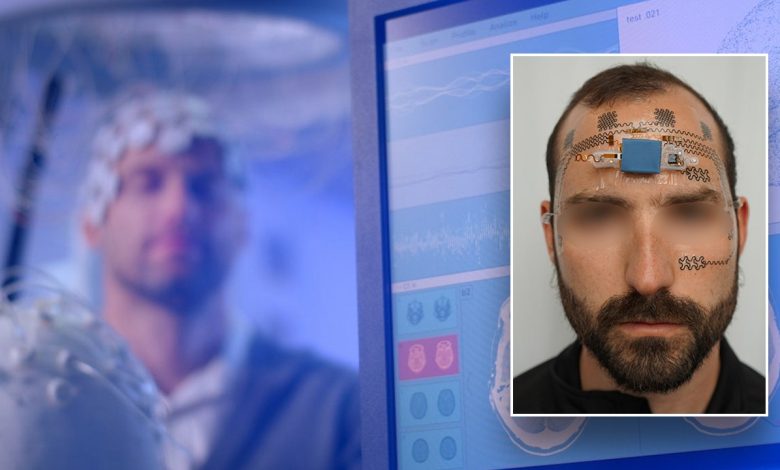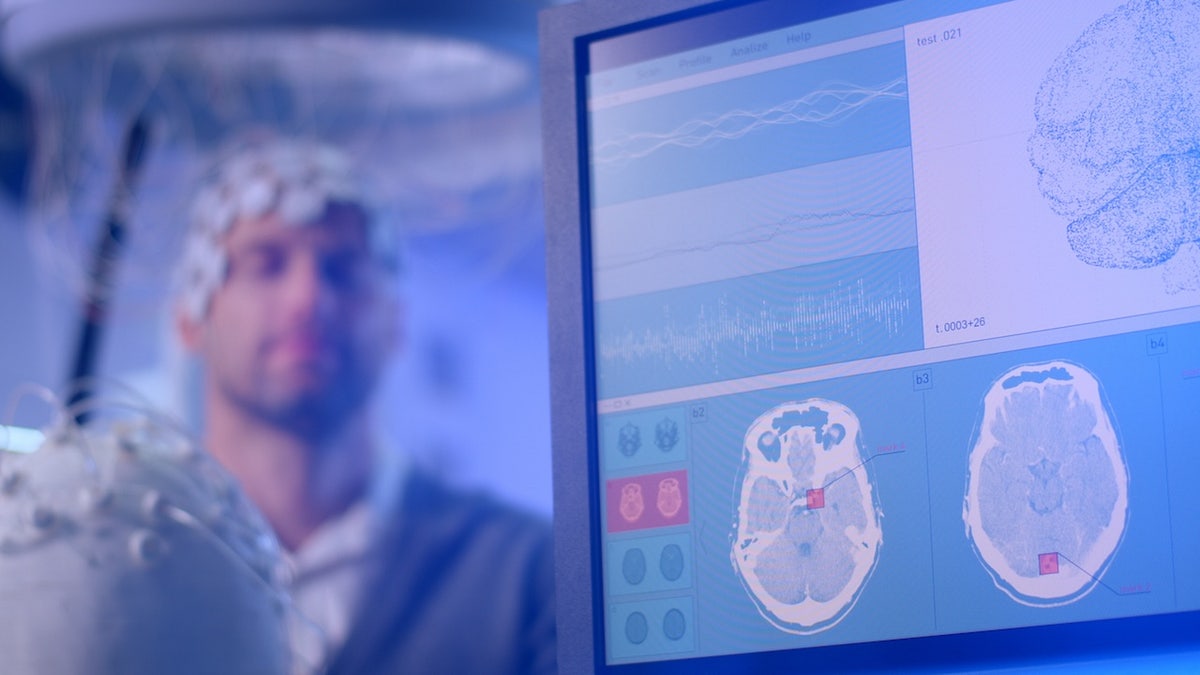Researchers develop face ‘e-tattoo’ to track mental workload in high-stress jobs

Scientists say that they have formulated a way to help people in stressful and demanding work environments track their brainwaves and brain usage — an electronic tattoo device, or “e-tattoo,” on the person’s face.
In a study posted in the science journal Device, the team of researchers wrote that they found e-tattoos to be a more cost-effective and simpler way to track one’s mental workload.
Dr. Nanshu Lu, the senior author of the research from the University of Texas at Austin, wrote that mental workload is a critical factor in human-in-the-loop systems, directly influencing cognitive performance and decision-making.
Lu told Fox News Digital in an email that this device was motivated by high-demand, high-stake jobs such as pilots, air traffic controllers, doctors and emergency dispatchers.
TEEN GOES FROM 10 NIGHTLY SEIZURES TO ZERO WITH BRAIN IMPLANT
Scientists say that they have formulated a way to help people track their brainwaves and brain usage. In a study posted in the journal Device, the team of researchers wrote that they found a more cost-effective and simpler way to track one’s mental workload. (Dr. Nanshu Lu)
Lu also said ER doctors and robot/drone operators can also leverage this technology for training and performance enhancements.
One of the goals of this study was to find a way to measure cognitive fatigue in high leverage and mentally straining careers.
The e-tattoo is temporarily attached to the subject’s forehead, and is smaller than current devices in use today.
According to the study, the device works by using electroencephalogram (EEG) and electrooculogram (EOG) to measure both brain waves and eye movements.
8 SLEEP TRACKERS TO HELP YOU GET A BETTER NIGHT’S REST

While most EEG and EOG machines are bulky and expensive, this e-tattoo brings a compact and cost-effective solution to that problem. (iStock)
While most EEG and EOG machines are bulky and expensive, the e-tattoo offers a compact and cost-effective solution.
Lu wrote that in this study, “we propose a wireless forehead EEG and EOG sensor designed to be as thin and conformable to the skin as a temporary tattoo sticker, which is referred to as a forehead e-tattoo.”
Lu also added that “human mental workload is a crucial factor in the fields of human-machine interaction and ergonomics due to its direct impact on human cognitive performance.“
The way the study was conducted was with six participants being shown a screen on which 20 letters flashed up, one at a time, at various locations.

The team found that as the tasks became harder, the different types of brainwaves detected showed shifts in activity that corresponded to a higher mental workload response. (iStock)
Participants were asked to click a mouse if either the letter itself, or its location, matched one shown a given number of letters.
Each participant carried out the task multiple times, corresponding to four levels of difficulty.
The team found that as the tasks became harder, the different types of brainwaves detected showed shifts in activity that corresponded to a higher mental workload response.
The device consists of a battery pack and reusable chips with a disposable sensor.
CLICK HERE TO GET THE FOX NEWS APP
Lu said that the device is currently a lab prototype.
“Before it can be ready for commercialization, it will need more development, such as real-time, on-tattoo mental workload decoding and validation on more people and in more realistic environments,” she said. “The prototype currently costs $200.”
Nick Butler is a reporter for Fox News Digital. Do you have any tips? Reach out to [email protected].



